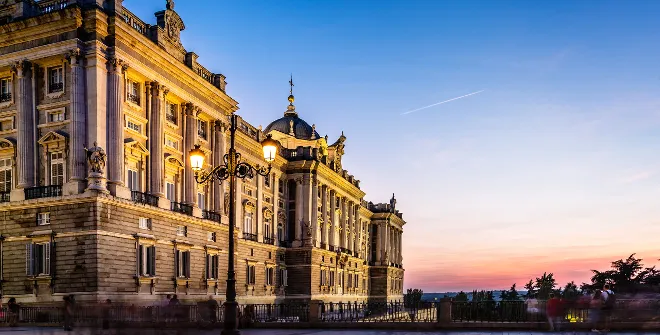A Madrid-style Christmas
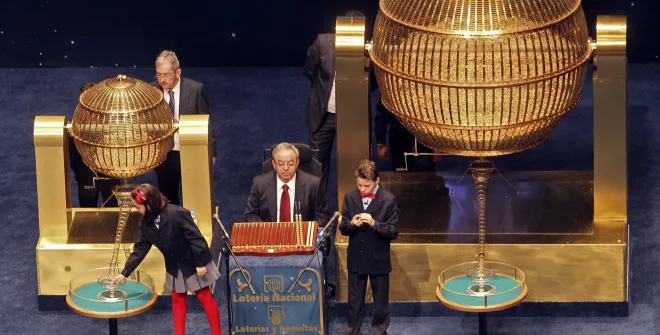


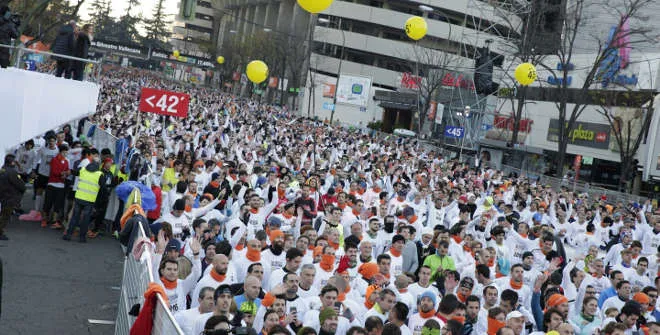
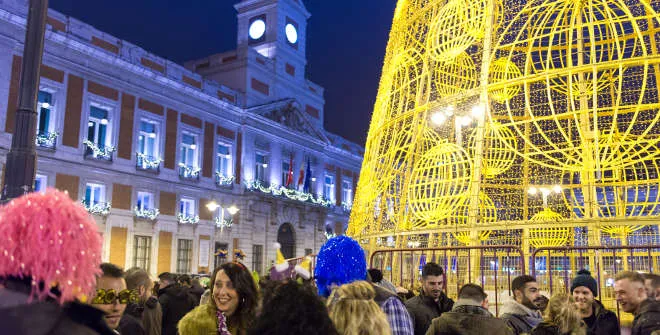
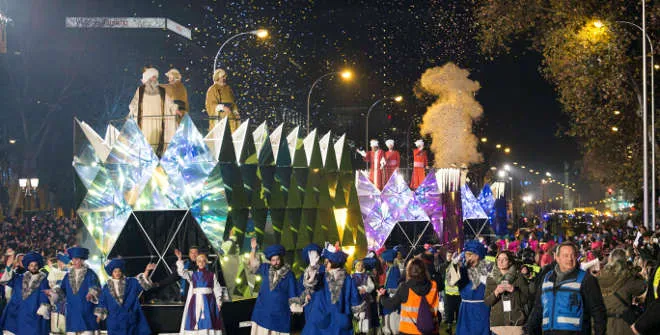
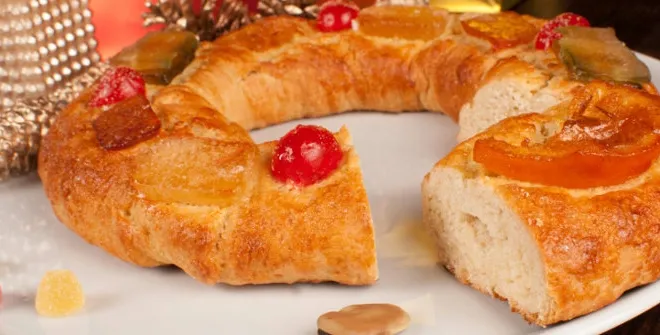
Since 2012, the Teatro Real opera house has played host to one of the highlights of the Christmas season in Spain: the Special Christmas Lottery. On 22 December in the morning, those who’ve bought their lottery tickets (that is to say, most Spaniards, for almost every family, group of friends or workplace in the country buys at least one) will harbour hopes of winning the Big Prize and making all their dreams come true.
The Christmas Lottery began in the nineteenth century, when the Cortes of Cádiz were in session (1812). In those days, the authorities thought it could be a good idea to add money to the public treasury without collecting new taxes. The name itself (Sorteo de Navidad, in Spanish) was made official in 1892.
Since December 18, 1812, the Christmas Lottery drawings are held according to exactly the same procedure each year. Pupils of the San Ildefonso school draw the numbers and corresponding prizes, delivering the results in song to the public. In the early days of the lottery, the numbers and prizes were printed on paper. Now, two spherical vessels containing small wooden balls are used.
For over 40 years, the draw took place in the Lotería Nacional hall on Calle de Guzmán el Bueno, in Madrid. In 2010 and 2011, it was held at the Palacio de Congresos. Finally, in 2012, it moved to the Teatro Real. This year, the lottery will give out 2,240 million euro in cash prizes.
The draw at the opera house is a huge event. Visitors can attend the event at the theatre for free. The theatre opens at 8am and fills up on a first-come, first-served basis.
As twinkling lights, Christmas decorations and sparkling window displays transform the city, magic fills the air and Madrileños prepare to celebrate their favourite holiday of the year.
From the end of November till the beginning of January, the city’s streets, buildings and squares twinkle with eco-friendly colourful lights created by renowned Spanish architects and graphic designers. This year, the city welcomes back some new decorations which were put up for the first time last year: "luminous nativity scenes" installed on various emblematic monuments such as the Alcalá, Toledo and San Vicente gates, the viaduct of Calle Segovia and the arches leading on to the Plaza Mayor. There are also new displays on various squares (Canalejas, Cibeles, Neptuno and Cuatro Caminos) and on such streets as Carrera de San Jerónimo, Atocha, Mayor and Montera. Huge Christmas trees have once again been put up in some of the city’s most popular sites, including the newly refurbished Plaza de España.
When will the Christmas lights be switched on in 2022?
From 24 November to 6 January:
- Sunday to Thursday: 6pm to 12 midnight
- Fridays and Saturdays: 6pm to 1am
- 24 December and 5 January: 6pm to 3am
- 31 December: 6pm to 6am
Over the Christmas period, Madrid hosts myriad events and activities for all ages. Head over to the beautiful Plaza Mayor square which hosts the city’s most popular Christmas market to purchase all kinds of Christmas decorations and figurines for the traditional nativity scene. Dotted around the city you will find various design and crafts markets, including the Madrid Arts and Crafts fair, which are great places for last-minute gift buying.
Elaborate nativity scenes are set up around the city in churches and cultural centres. Found in most Spanish households, these crèches (belenes) illustrate scenes from the birth of Jesus, and include figures like Mary and Joseph, shepherds and angels, and the Three Kings following the Star of Bethlehem.
If you’re in the mood for shopping, you should head to the area around Puerta del Sol, Gran Vía, Plaza Mayor and Callao, where you’ll find every item on your shopping list. The Three Wise Men and Father Christmas can be found in the area collecting letters from the youngest members of the family who can then enjoy the traditional Cortylandia show on Calle Maestro Victoria.
Theatres and cultural centres across the city stage a host of Christmas shows and concerts such as the New Year’s Concert at the Teatro Real opera house, a Gospel Festival and the production Christmas at the Circo Price. Another must for kids are the ice rinks set up in some central squares and the carousels located in front of the Royal Palace and behind Sol. If you want to take a tour of the city's lights, hop on the Naviluz and enjoy a 45-minute ride in an open-top bus.
On 31 December in the afternoon, Madrid hosts the traditional San Silvestre Vallecana race, with an increasingly large number of participants and sponsors. Although it adds slots every year, the number of participants is limited, so places sell out fast.
The running race starts in the financial district, on Calle Concha Espina, next to Paseo de la Castellana (metro station: Santiago Bernabéu), going past some major tourist sights like Puerta de Alcalá gate, the Cibeles Fountain or Paseo del Arte (Art Walk). The finish line for pros is at the Vallecas football stadium, home to the Rayo Vallecano football team in the Vallecas district. Amateur racers finish in the vicinity of the stadium.
It’s an attractive course, the first 8 of the total 10 kilometres going slightly downhill. However, brace yourself for the final, uphill, stretch, for some of the climbs can be taxing (especially between marks 8 and 9).
Every year, on New Year’s Eve, Puerta del Sol becomes the navel of the country’s revelry. Thousands of people from the most distant corners pack the square on 31 December to greet the New Year while eating one lucky grape to each of the 12 midnight chimes from the Real Casa de Correos clock.
There are different stories about the origin of the 12 grape tradition. According to the most popular, in 1909, winegrowers in Levante had a surplus of grapes, and so they gave them to the population for free. They said those who ate the grapes on New Year’s Eve would be prosperous the following year.
It’s quite clear they were convincing. More than a century later, people across Spain gobble down their dozen grapes – one for each month of the coming year – to the beat of the clock chimes in Puerta del Sol.
When the clock strikes on 31 December, almost everyone in Spain is watching it, either live or on TV. A few seconds before midnight, the ball on top of the clock goes down with carillon sounds. Then, the four anticipatory tones (cuartos in Spanish) can be heard as a prelude to the 12 chimes themselves, striking every three seconds to prevent grape eaters from choking.
The clock ceremony is only the beginning of a very long night. On New Year’s Eve, Madrid never really gets to sleep. Festive atmosphere, music and merrymakers are all around. If you’re coming to Madrid, you should make sure you spend New Year’s Eve in town.
On Epiphany day (6 January), Spanish kids traditionally wake up to find the reward to their last year’s behaviour: presents for the well-behaved, charcoal for the naughty. These are left in their homes by the Three Wise Men from the East, who travel the streets of Madrid the day before (5 Jan) in a spectacular parade.
The Three Kings and their cohort set off from Plaza de San Juan de la Cruz and go down Paseo de la Castellana to Plaza de Cibeles, where they deliver a message to all children.
Turrón (almond nougat), marzipan, glacé fruit, mantecados (traditional powdery sweets), roscón de Reyes (a large ring-shaped bun eaten on January 6th)… There is no doubt that Christmas is the sweetest date on the calendar. Put your diet aside for a few days, and take a tour of the oldest patisseries in Madrid.
Long queues have been forming since 1942 outside Casa Mira where you’ll find a huge selection of turrones all year round. Another establishment oozing history is Antigua Pastelería del Pozo, which opened in 1830. They specialise in hand-made puff pastry sheets, filled with cream or cabello de ángel (pumpkin jam), and when Christmas rolls around they produce their popular pan de Cádiiz (a marzipan bun with egg yolk, quince and coconut).
El Riojano is a small shop –declared Artistic Heritage– which was founded in 1855 by Queen Isabel’s baker. The royal cabinetmakers worked on its decor, which combines mahogany wood and Carrara marble. Everything is home-made, and in the tea room they serve all kinds of delicious sweets: bartolillos (fried pastries filled with cream), pestiños (honey-coated pastry), almond cakes…
Horno La Santiaguesa, a slightly newer patisserie, sells mouth-watering traditional turrón, olive oil polvorones, marzipan figures, nut brittle and crystallised fruit. Horno de San Onofre is also a firm favourite, and is worth a visit if only to stare at the colourful window: a delight for the senses. Their ovens create wonderful chocolate trees and one of the best roscones de Reyes in Madrid. They offer a selection of ring-shaped buns: from the traditional plain option to roscones filled with cream, hazelnut, raspberry or pumpkin filling.
Read more about traditional sweets and pastries
OFFICIAL PRODUCTS
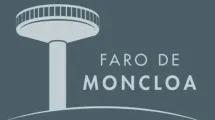
Panoramic views at 92 metres
An observation deck offering wonderful vistas of the city.
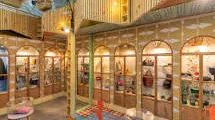
Official Madrid Shop
Visit our online store (in Spanish) of souvenirs made by local artisans!
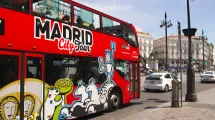
Madrid City Tour
Hop on board the city's official sightseeing bus!
